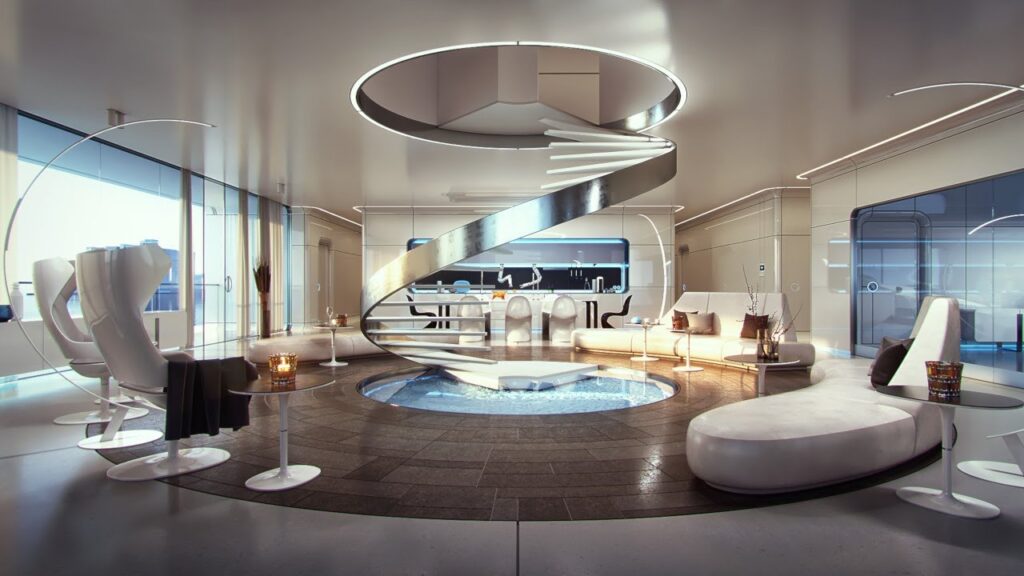
Architects, designers, and artists are unemployed if they can’t communicate their ideas. The first and most important thing anyone in the design industry must understand is that clients don’t think as you do. They need handholding, dumbing down, and most importantly – they need to be blown away!
What tools we use to garner that bugged-eyed jaw dropped wow factor response – as well show we’re the professional worthy of being hired –are vital for our success.
That’s where VRay for Rhino comes in. The universal plug-in. The fixer.”The Wolf” for you Tarantino fans. It’s the engine behind turning out the believable realization of your designs no matter what 3D modeling software you prefer, and architects will find a lot to like about it (I’ll get to that in a minute). There are dozens of rendering plug-ins and finding one that works best for you can be an exercise in patience, trial and error, and maddening late nights trying to get your bump-mapped board-formed concrete walls do not look like ass before your early morning client meeting.
While I can’t guarantee more sleep and fewer all-nighters, I can tell you VRay will have those board-formed concrete walls looking better than they ever have. Not only that, there are plenty of other reasons to choose VRay over the rest. Here are some of the advantages of using VRay for architectural rendering.
1. Real-world material rendering is much more…real-world.
Architects often find themselves in design communication purgatory, or the poisonous space between ‘conceptual’ and ‘finished.’ If they can’t represent a design, how are they supposed to build it? An architect must exhibit skill and capability throughout all phases of the project to be taken seriously by clients who need assurances that everything will go smoothly on construction day. VRay is one way architects can maintain control over every aspect of their designs with precision so realistic we dare you do not believe your eyes!
2. VRay is fast. Real fast.
The VRay rendering engine is the perfect visualization tool for architecture firms because it offers fast render times. With quicker animations, drafts and presentations will be more efficient than ever before!
Render farms such as Rebusfarm offers too faster render times with cloud rendering services. A render farm is a network of high-performance computers used for rendering complex digital images or animations. They are often used in the film, animation, and architecture industries to render large projects that could be more practical to render on a single computer. So come and get a free trial to render your next project faster than ever before for free.
3. Extensive Material Library and resources.
Architects have to be creative with the materials they work with. For example, VRay provides a vast library of textures and finishes, making any design come alive in detail! This is because everything from colors to material type affects how your finished product looks- if you don’t get this right, then all that hard work goes out the window.
4. A wealth of options.
VRay is more difficult to maneuver, so those who wish to explore its deeper capabilities may find themselves in a rabbit hole. An overwhelming abundance of knobs and sliders make VRay complicated for newcomers but grasping the basics will come quickly with guidance from an expert.
VRay is the 3D rendering plug-in that architects and designers depend on to make their visions a reality. With users eager processing power, artists have an unprecedented level of control over every aspect of design drawing with VRay’s massive cache of options for flexibility in fine-tuning camera settings, material bump maps and texture source, as well as the depth of field adjustments where needed. Ultimately this is what comes from our uncompromising dedication to your dreams: unmatched creative freedom so you can spend more time designing or creating rather than worrying about technical limitations such as render times which are often one hour per frame!
5. It has a steep learning curve but in a good way.
VRay is notoriously tricky to get the hang of. The abundance of options and settings, vast material library and the unique interface make for a bit of a learning curve. You’ll be putting in some work upfront to wrap your head around what works well or doesn’t so that you can appreciate VRays’ value when it comes time to use it on an actual project.
That work is what makes VRay worth the price of admission. Architects who pay attention are rewarded with patience – spending hours tweaking everything from materials used for textures down every last detail in their models will result in a more efficient workflow later on.
6. There are plenty of resources for noobs and professionals alike.
VRay is the most popular rendering product on the market. It’s no surprise why, with many tutorials and lessons available to help users get better at it every day. With such a steep learning curve comes the necessary practice to achieve your best experience with this software package. The more guided and focused that practice regimen is, the faster you will become an expert!
If you want to learn about VRay, a quick internet search will yield plenty of tutorials for video lessons ranging in length from 5 minutes to over an hour. For more comprehensive courses, online schools can make an expert out of anyone within just a few weeks by guiding them through self-guided work. Learning the best visualization software has never been easier!